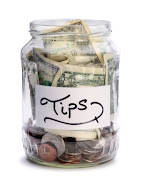Hyperinflation: Money to Burn
Der Spiegel: "Germany in the Era of Hyperinflation", by Alexander Jung During the hyperinflation in Germany of 1920s, the country's currency, the mark, went crazy. The government of the Weimar Republic may have been able to clear its debts, but it came at the cost of the citizens' savings. It's an era that is still part of the national psyche today.
During the hyperinflation in Germany of 1920s, the country's currency, the mark, went crazy. The government of the Weimar Republic may have been able to clear its debts, but it came at the cost of the citizens' savings. It's an era that is still part of the national psyche today.
Editor's note: During the global economic crisis, politicians and economists in the United States and Britain often criticized Berlin for its reluctance to initiate the kinds of expensive stimulus programs promoted by Washington. One of the most oft-cited reasons in Germany for racking up more debt than necessary to revive the economy was the fear of hyperinflation. From 1922-1923, hyperinflation plagued Germany and helped fuel the eventual rise of Adolf Hitler. The following article about this national trauma has been translated from a special issue of SPIEGEL on the history of money.
You could say journalist Eugeni Xammar had a stroke of reporter's luck when the Barcelona daily La Veu de Catalunya sent him to Berlin in the fall of 1922, a pivotal moment in the country's history. In the months that followed, it was the most exciting place in the world to report from. Germany's financial structures collapsed, and the mark began its descent into near worthlessness. (...) >>>
Related:
The Captain's Comments: "The Looming Threat"













No comments:
Post a Comment